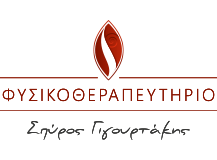 Exercise pain doesn’t equal tissue damage
Exercise pain doesn’t equal tissue damage
Therapeutic exercise that temporarily aggravates pain needn’t be ruled out or avoided in people with painful musculoskeletal disorders, concludes a systematic review of the available evidence.
This is because it can lessen pain, overall, at least in the short term.
The researchers drew on nine studies (covering seven trials), which compared the impact of home-based exercise programmes designed to encourage/allow pain with those designed to avoid it, on overall pain levels, physical function, and disability.
The studies involved 487 people aged from 19 to 83 years with low back, shoulder, achilles tendon or plantar heel pain.
Pooling the data from the six trials (385 participants) which reported on pain levels showed that pain-inducing exercises conferred a small but significant benefit compared with pain-free exercises, in the
short term.
The pooled data also showed a moderate but significant benefit for pain-inducing exercises in the medium term, but there was no difference on pain levels between either type of exercise over the long term.
And there was no difference in the impact on physical function and disability at any time point between the two types of therapeutic exercise.
Small numbers of participants and differences in trial design meant that the quality of the evidence was low to very low, as measured by GRADE (Grading of Recommendations Assessment, Development
and Evaluation) criteria.
In theory, the positive effect of exercises ‘into pain,’ which typically involve higher loads/ resistance and longer duration may be due to their impact on the central nervous system, suggest the study authors.
‘Specifically, the exercise addresses psychological factors, such as fear avoidance, kinesiophobia [fear of movement] and catastrophising, and is set within a framework of “hurt not equalling harm”, thus in time, reducing the overall sensitivity on the central nervous system, with a modified pain output,’ they write.
Smith BE et al. Should exercises be painful in the management of chronic musculoskeletal pain?
A systematic review and meta-analysis.
British Journal of Sports Medicine 2017
http://bjsm.bmj.com/content/early/2017/06/07/bjsports-2016-097383

